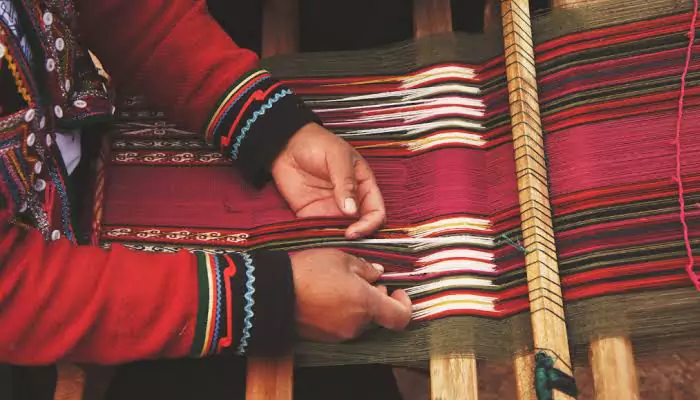
From Gandhian threads to regional masterpieces—let’s untangle the fabric confusion!
In India, where the fabric of culture is woven into our clothes, terms like ‘Khadi’ and ‘Handloom’ are used interchangeably - but should they be? On this National Handloom Day, it’s the perfect time to clear the confusion and celebrate both fabrics for what they truly are.
Let’s unravel the mystery - thread by thread.
Khadi is not just a fabric; it’s a movement. Popularized by Mahatma Gandhi during the Swadeshi movement, Khadi symbolizes self-reliance and embracing Indian pride. But technically, Khadi refers to any hand-spun and hand-woven fabric, typically made from cotton, though it can also be wool or silk.

So, in simple words, Khadi = hand-spun + hand-woven
That means every strand of Khadi is first spun on a charkha (spinning wheel), and then woven by hand on a loom - making it 100% handmade.
Handloom fabric, on the other hand, is woven manually on a loom, but not necessarily hand-spun. The yarns used in handloom can be mill-spun or machine-made, but the weaving is done by artisans using traditional looms.
In simple words, Handloom = machine/mill-spun + hand-woven

Think of Banarasi, Chanderi, Ikat, Kanchipuram - these are all handloom wonders made with intricate regional techniques.
Talking about the feel, Khadi is more coarser and breathable, whereas, handloom dresses are smooth.

Fact: While both are hand-woven, Khadi is also hand-spun, making it more labor-intensive and eco-friendly.
Fact: Today’s designers are giving Khadi a fashion-forward spin by introducing Khadi kurtas, dresses, even jackets which are Gen Z-approved!
Fact: Handloom is a new trend even among youths, thanks to ethical fashion choices and celebrity endorsements. Remember Alia Bhatt’s handloom saree on the red carpet?

When selecting between khadi and handloom fabrics, think about purpose, texture, and climate. If you're looking for something breathable and rustic, khadi is perfect for casual wear or summer clothing. It’s hand-spun, so it usually has a raw and earthy feel.
Handloom, on the other hand, offers more varieties like silks, cottons, and blends; making it suitable for both everyday and festive looks.
For ethnic occasions, handloom silk sarees or dupattas from regions like Banaras or Kanchipuram are timeless. Always check for authenticity tags like GI tags or India Handloom Brand labels to ensure you’re buying ethically produced and genuine fabric.
Whether it’s the breathable charm of Khadi for humid monsoons, or the grandeur of handloom for special occasions, there’s a place for both in your closet. By supporting them, you are making a cultural statement.

In the era of fast fashion, understanding the origin and making of your clothes helps promote slow, mindful, and sustainable fashion. When you buy Khadi, you're supporting rural spinners and weavers. When you choose handloom, you're endorsing regional artistry.
Both Khadi and handloom varities represent India's textile diversity and heritage, and deserve to be celebrated in their own right.
So next time you’re shopping, look beyond the label. Ask: Is this Khadi or Handloom? Or both? Either way, you’re choosing India.